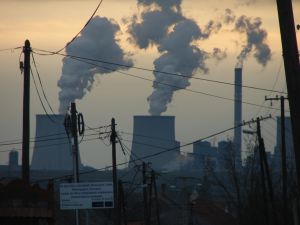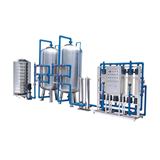Professor Nanthi Bolan and Professor Ravi Naidu of the CRC for Contamination Assessment and Remediation of the Environment at the University of South Australia says Australia needs to avoid a legacy of toxic waste being left as a 'time bomb' close to its major population centres.
Coal fired power provides the majority of Australia's energy needs.
"When coal is burned to generate electricity it produces a number of combustion products which contain heavy metals and organic contaminants," Professor Bolan said.
"Traditionally, these have been dumped in large piles or ash-ponds mostly around the power stations themselves. These products can pose serious threats to air, water and soil, and consequently to living organisms, including people."
The researchers say this risk from old coal-fired power stations is similar to the risk from old oil refineries, gas works and service stations — as cities grow, contaminated sites are surrounded by homes, workplaces and schools, exposing more citizens to the risk of legacy toxins from decades earlier.
"If we want to keep our future cities clean, healthy and fit for our children to grow up in, then we need to take steps now to ensure this contamination is managed, contained, neutralised or removed," Professor Naidu, the managing director of CRC CARE, said.
"Over the coming 30 or 40 years many of Australia's old coal-fired stations will close down, partly due to the carbon tax and partly as they are replaced with cleaner, more efficient forms of power generation. Today these are mostly on the urban fringe — but that may not be the case as cities grow.
"Ensuring the contamination is properly dealt, and budgeted for, should be a part of the decommissioning plan for all our brown-coal and black-coal power stations."
Professor Bolan says that coal naturally contains a range of heavy metals such as mercury, arsenic and cadmium, as well as organic compounds left behind in the ash when it is burnt.
"Although there are advanced technologies for curbing contamination at coal mines around the world and in Australia, this is not necessarily the case with the pollution left by power stations," he said.
"In many cases the ash and other combustion byproducts are left in large dumps or ash-ponds close to the station itself. Over time these can leach into the surrounding environment, which is increasingly an urban one.
"Unless we take action, this problem will linger for centuries to come. Generically we can call this a time bomb — but the concept may or may not apply directly to ash-ponds.
"The contaminants present can vary widely depending on the type of coal used and the combustion process. In most countries the use of untreated coal ash for beneficial uses like soil improvement and industrial applications is banned due to the contaminants."
Even waste products from clean coal technologies such as flue gas desulphurisation gypsum (FGD gypsum) are considered unsuitable for large scale beneficial applications.
"At the moment a large amount of effort is going on around the world and in Australia into preventing carbon emissions from coal-fired power stations — but this other form of pollution is not receiving the attention it deserves," Prof Bolan said.
"Technologies exist to reduce the risk from old power station sites — such as phytocapping, or the use of vegetation to cover the dumps and prevent rainfall from leaching the contaminants into waterways, and the use of active barriers to intercept and cleanse polluted groundwater.
"We may also be able to convert coal ash into a safe soil improver. However there is much work still to be done to develop a suite of solutions for any situation."
Professor Naidu adds most of Australia's old coal-fired power stations will be decommissioned over the coming three or four decades as technology changes, prices rise and national electricity demand rises — but a carbon price will result in earlier closure of the dirtiest and least efficient units.
"This issue is looming now, and we need answers to it," he said. "It may be sensible to earmark at least part of the carbon tax as a clean-up levy to ensure that decommissioned power stations are properly remediated and cannot affect the nearby urban environment, its water or the health of its citizens."
The researchers say an example of a clean-up levy is one imposed by the State of California on owners of underground petroleum storage tanks.
There is also a fund to assist small businesses with unexpected and catastrophic expenses associated with the cleanup of leaking petroleum tanks as well as other petroleum pollution emergencies that pose a threat to human health, safety, and the environment.


-160x160-state_article-rel-cat.png)




-160x160-state_article-rel-cat.png)













-160x160-state_article-rel-cat.png)

